Laghman: Basic Information
Pronunciation
Alternative Name(s)
Dish Type
Course
Mealtime
Popular Variations
- Laghman with chickpeas (Afghanistan)
- Kazakhstan guyru laghman (Boiled noodles)
- Boso laghman (Fried noodles)
Laghman: Ingredients and Preparation
Main Ingredients
Main Cooking Method
Preparation Process
Laghman: A Deep Dive
Cultural Significance
Taste
Texture
Aroma
Color
Serving Style
Serving Temperature
Accompaniment
Occasions
Seasons
Special Diets
Calories
Popularity
Popular Similar Dishes
- Beshbarmak
- Ramen
Popular Dining Area
Laghman is a traditional noodle soup in Uyghur cuisine, especially in Xinjiang, an autonomous region in northwest China. It is also popular in Central Asia. In general, laghman is a combination of pulled noodles with vegetables and meat (usually lamb or beef).
In Central Asian countries like Kyrgyzstan and Kazakhstan, laghman is crucial to the Uyghur and Dungan (Hui) communities, considered to be a national delicacy.
The ingredients also vary depending on the country creating laghman. Moreover, the noodle itself is known as “latiaozi” in Chinese or “bànmiàn” among the Dungan people.
Now, allow me to introduce you to all the fascinating features that make laghman popular in Central and South Asia. Then, let’s dive deeper into the noodles and their varieties used for making laghman.
To elevate laghman flavor, you shouldn’t miss some interesting suggestions. Additionally, you’ll get the chance to weigh the pros and cons of consuming laghman.
Key Points
Laghman Images
Why Laghman Is Popular in Central and South Asia?
Laughman is believed to have originated from the Uyghur people, who live in regions of East and Central Asia. Also, the Silk Road connected China to many Central Asian countries and helped spread this noodle.
How Laghman Is Adopted into Central Asia?
Each country in the region offers a unique take on laghman. Here are some versions to check out:
- Kazakhstan: In Kazakhstan, laghman is often prepared with a variety of meats and vegetables, reflecting the country’s diverse culinary landscape.
- Kyrgyzstan: Kyrgyzstan’s version might include more meat, aligning with the country’s nomadic traditions and preference for meat-heavy dishes.
- Tajikistan: In Tajikistan, the dish might be found with a different assortment of spices thanks to the country’s unique blend of culinary influences.
- Uzbekistan: Uzbek laghman can be distinct in its use of local vegetables and spices, influenced by the country’s rich agricultural heritage.
- Turkmenistan: While not as central to Turkmen cuisine, laghman can still be found, often reflecting a blend of the various culinary traditions of the region.
Next, let’s head to South Asia to see how nations in the region brought laghman to life.
How Laghman Is Adopted into South Asia?
In South Asia, Afghanistan, and Pakistan are two prime examples of adapting laghman to their diet:
- Afghanistan: Available in the Northeastern region of the country, laghman is a common meal for the population.
- Pakistan: In the Northern part of the country, laghman comes with chicken peas for added creaminess to the dish.
Overall, each country has its own way of interpreting laghman by using various ingredients or different types of noodles.
What Are Laghman Noodles?
Laghman noodles are a key component of a laghman dish, mainly made from a dough mixture of water, eggs, salt, and flour. After combining all the elements, the dough is kneaded and rolled thinly before being cut into pieces of different sizes.
Additionally, the cut noodles are boiled in broth or water to fully cook through. People often know of laghman noodles as hand-pulled noodles because of the hand-stretch process that creates a chewy texture.
Since laghman is popular in many countries, each region has different noodles, whether in the ingredients or making methods, resulting in many noodle variants for laghman.
What Are The Different Types of Laghman Noodles?
Laghman noodles are popular in Central Asia and parts of China, usually available in 3 distinct forms: traditional hand-pulled noodles, guyru laghman (boiled noodles), and boso laghman (fried noodles).
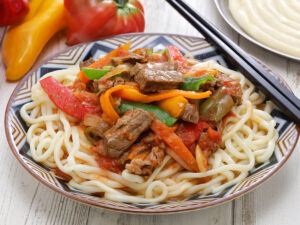
Hand-pulled noodles:
These noodles are made by pulling and stretching the dough by hand until they are thin and long. They are usually boiled in water or broth and served with meat and vegetables.
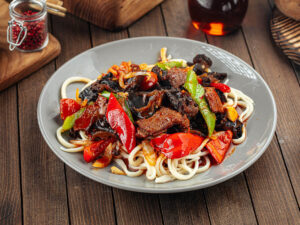
Guyru laghman:
These noodles are boiled, but the broth is less liquidy.

Boso laghman:
Made by frying, these noodles provide a crispy and golden touch to laghman.
While laghman comes with various noodle types to create the noodle soup, this noodle soup also offers various accompaniments to enhance the flavors.
What to Have with Laghman?
Savoring laghman is not just about the noodle, as some extra culinary options can help elevate the flavor to a new height:

Tandyr nan:
A traditional bread baked in a clay oven, perfect for soaking up the rich broth of laghman.
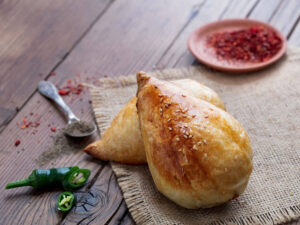
Samsa:
Savory pastries filled with meat (often lamb or beef) and spices, baked to a golden crisp.
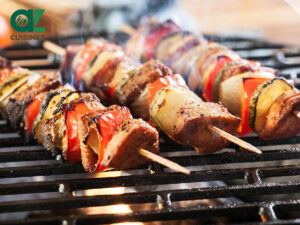
Shashlik:
Skewered and grilled meat, typically marinated and cooked over an open flame for a smoky flavor.

Salads:
Fresh, light salads like cucumber and tomato salad provide a refreshing contrast.

Pickled vegetables:
Assorted pickles or pickled vegetables like carrots, cucumbers, and cabbage add a tangy crunch.
Once you’re ready to savor laghman, don’t forget to check out all the features that decide whether this dish is suitable for you.
Pros and Cons of Eating Laghman
Before going for a warm bowl of laghman, I suggest taking a brief look through the upsides and drawbacks of having this pulled-noodle soup.
Pros
Cons
Now that you’re informed about the benefits and potential concerns of enjoying laghman, some additional questions regarding the dish below will show you more necessary information.



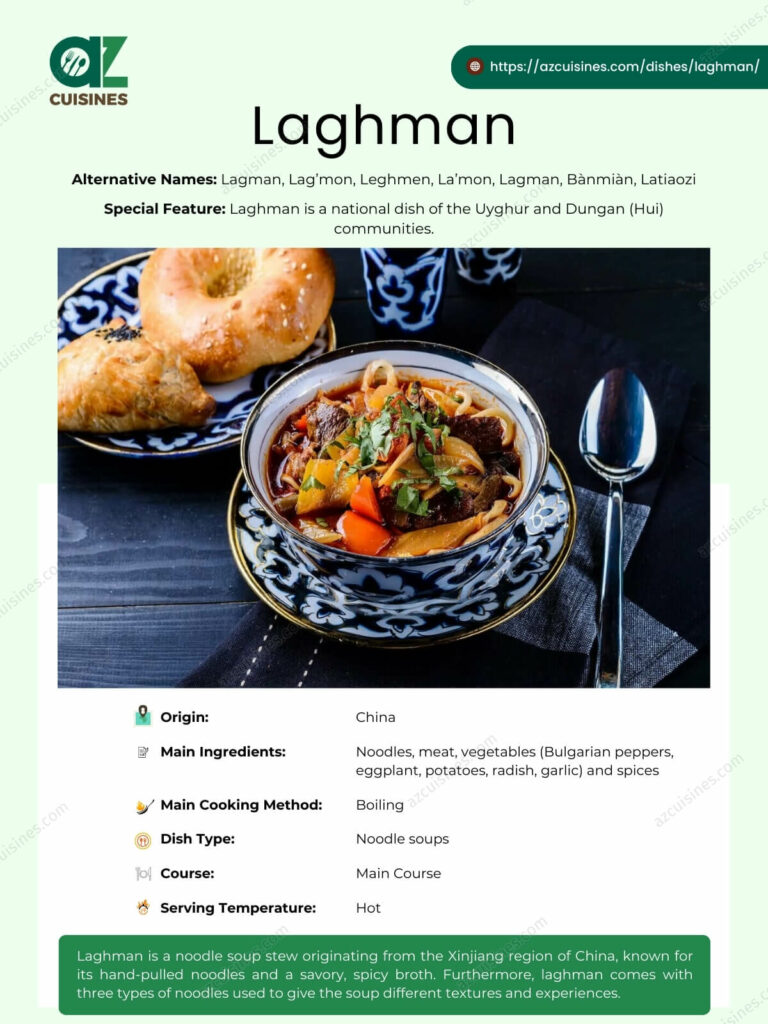
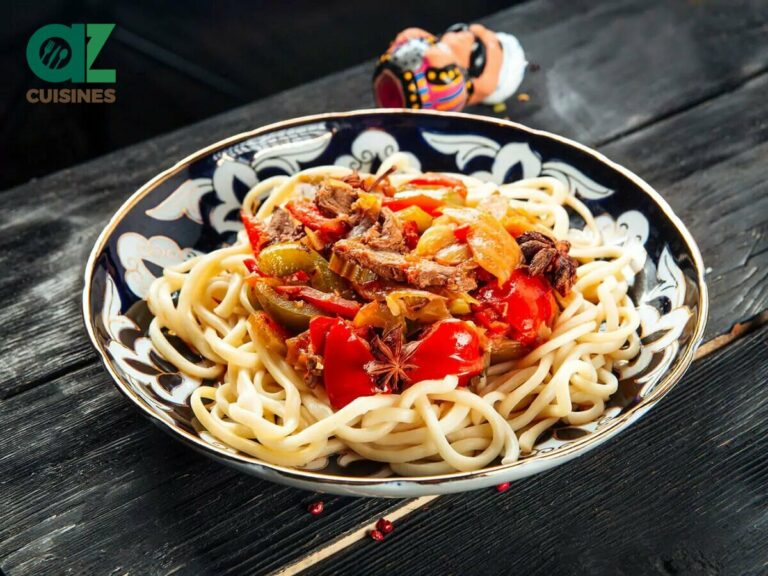



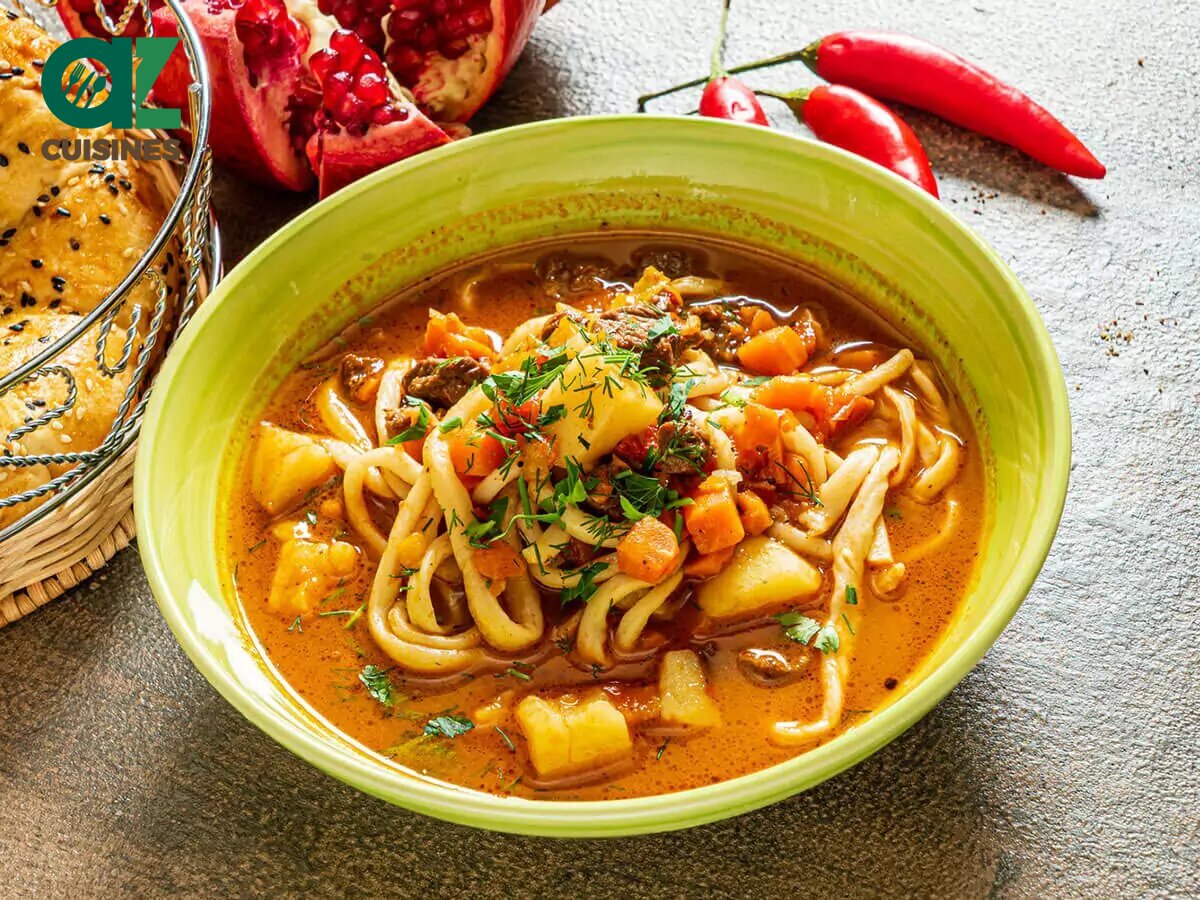
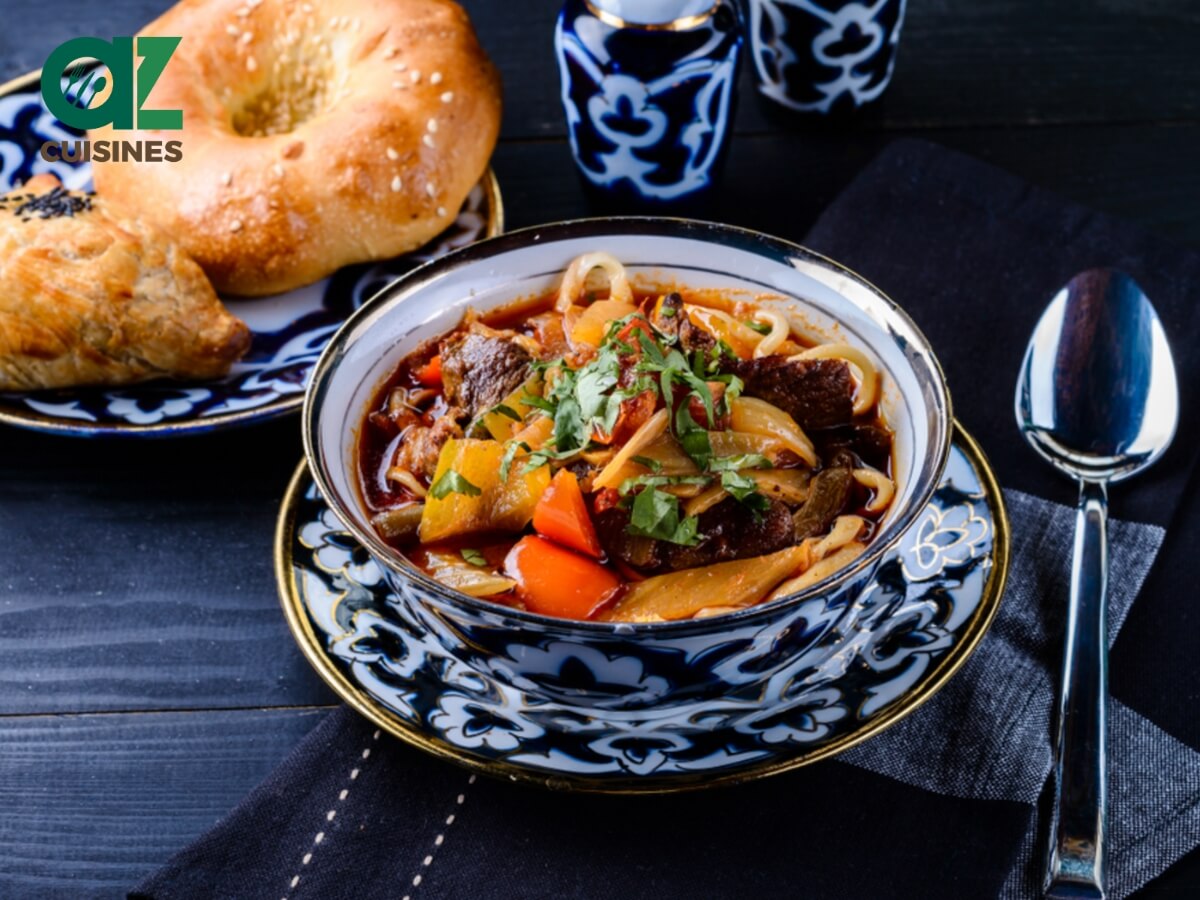
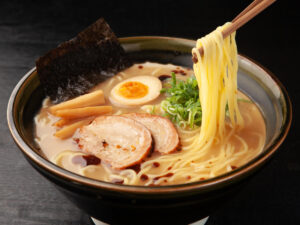
Adam Sam
Senior Food and Drink Editor
Expertise
Food Writer & Recipe Developer, Recipe Tester, Bartender, Cooking-video Maker, Editor In Chief
Education
Adam Sam, an experienced food writer and recipe developer, is passionate about blending diverse culinary traditions, national dishes, and innovative beverages, showcasing his proficiency in both traditional and modern recipe testing.
As the Editor-in-Chief, he elevates culinary content from street food to fine dining, focusing on Western cuisine and types of drinks at azcuisines.com, and is professional in creating engaging cooking videos that simplify complex dishes and ingredients.
His passion for food is evident in his writing, where he uniquely merges various cultures, traditions, and contemporary trends, skillfully combining classic recipes with modern cooking methods.